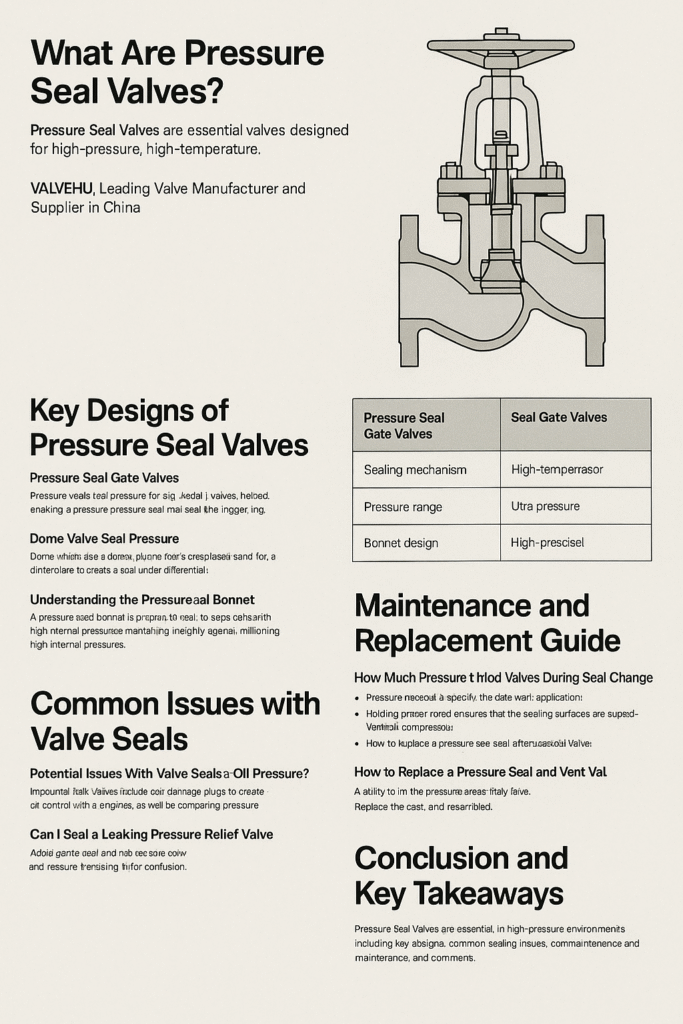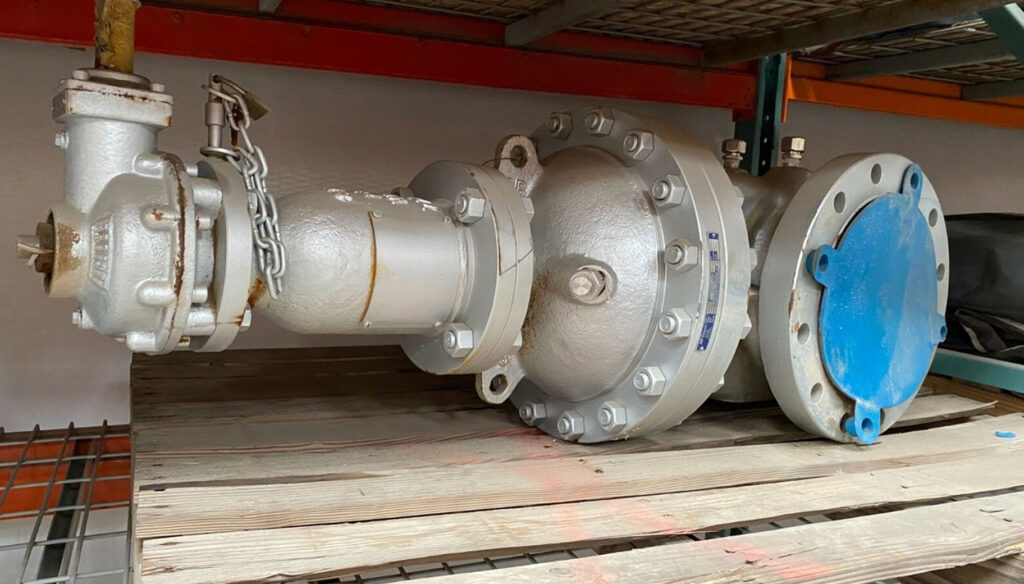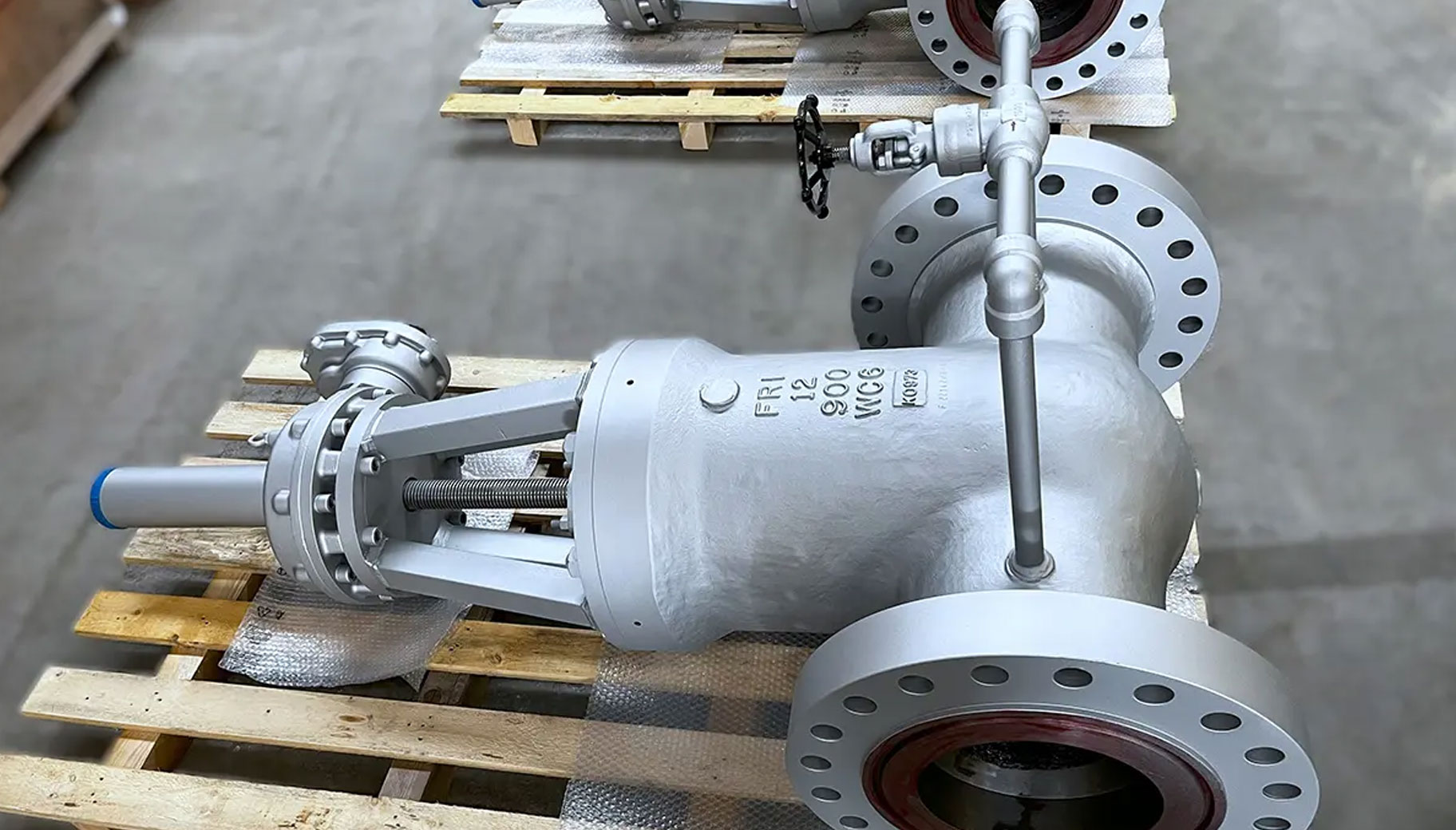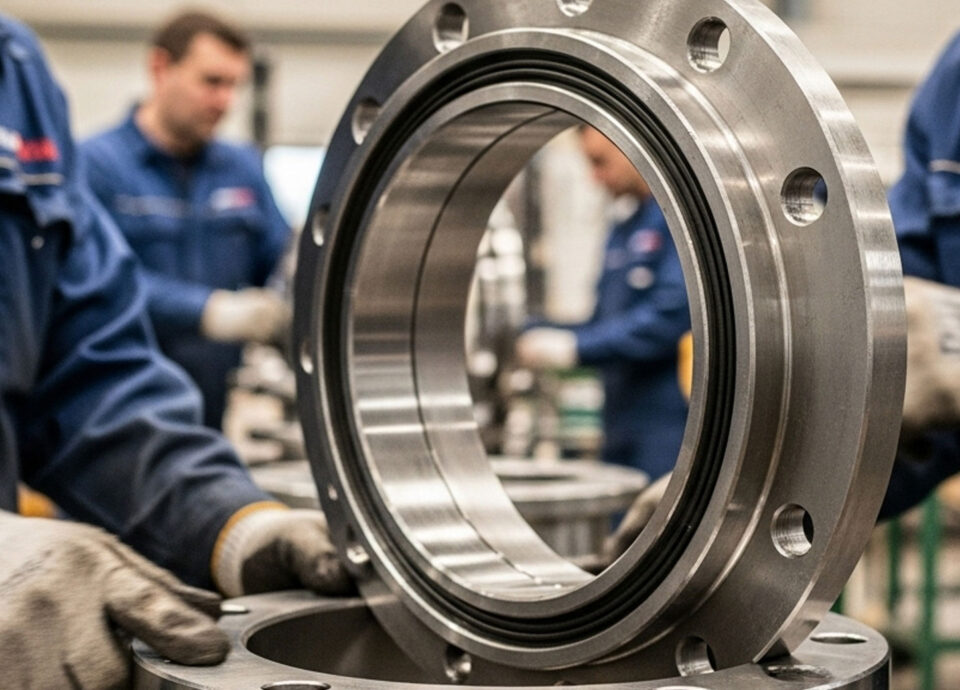When it comes to handling high-pressure and high-temperature fluid services, Pressure Seal Valves are trusted by engineers worldwide for their unique sealing capabilities. But what makes these valves so reliable, and how can you keep them working at peak efficiency? This guide will answer all your questions — from how pressure seal designs work to fixing common seal issues.

What Are Pressure Seal Valves?
Pressure Seal Valves are industrial valves specially designed for high-pressure applications. Unlike conventional bolted bonnet valves, pressure seal valves use the internal system pressure to enhance the bonnet joint’s tightness.
So, the higher the internal pressure, the tighter the seal a feature that makes them ideal for steam generation, nuclear plants, and other critical pipelines. The design minimizes potential leaks, reduces maintenance downtime, and increases safety, especially in systems with pressures exceeding 2,500 psi (172 bar).
Key benefits include:
- Self-tightening design
- Lightweight compared to bolted bonnet designs
- Better leak prevention under thermal cycling
- Cost-effective for high-pressure, high-temperature operations
VALVEHU, a China-based valve manufacturer trusted by engineers worldwide, supplies pressure seal valves that meet stringent ASME standards for safety and durability.
Key Designs of Pressure Seal Valves
Pressure Seal Valves come in various designs to suit different industrial needs. The most common types include gate valves, globe valves, and check valves each optimized for specific flow control tasks.
Let’s break down some important comparisons and clarifications:
Pressure Seal Gate Valves vs Seal Gate Valve
While “Pressure Seal Gate Valve” is a precise term for a gate valve with a pressure seal bonnet, “Seal Gate Valve” is sometimes used loosely for soft-seated or elastomeric-seal gate valves.
A Pressure Seal Gate Valve uses a metal-to-metal seal that becomes tighter with rising pressure, making it suitable for harsh steam and gas applications. In contrast, a Seal Gate Valve may simply refer to a standard gate valve with a resilient seat more common in low to medium-pressure pipelines.
| Feature | Pressure Seal Gate Valve | Standard Seal Gate Valve |
|---|---|---|
| Seal Type | Metal-to-metal | Soft seat / elastomer |
| Max Pressure | Up to 2,500 psi or more | Typically under 600 psi |
| Application | Steam, nuclear, thermal | Water, oil pipelines |
Dome Valve Seal Pressure Explained
Dome valves are less common but critical in bulk handling systems like pneumatic conveying. The dome seal operates with inflatable seals that pressurize to block material flow. Understanding dome valve sealing means knowing the inflation pressure must be precise too low and it leaks, too high and it wears out fast.
Pro tip: Always verify the air supply regulator is calibrated to the manufacturer’s spec usually 3–5 bar for dome valve seals.
Understanding the Pressure Seal Bonnet
The pressure seal bonnet is the heart of these valves. Instead of bolts, it relies on a downward force generated by internal pressure to compress a gasket into place. This means less chance of bolt failure, fewer leaks, and reduced weight.
However, precise machining of the mating surfaces is critical. Even a tiny scratch can compromise the seal. That’s why reputable suppliers like VALVEHU follow strict QA processes and surface finish standards.
ommon Issues with Valve Seals
Even the best-engineered valves can face seal issues over time. Here are some practical insights:
Can Bad Valve Seals Cause Low Oil Pressure?
Absolutely. In engines, worn valve seals can let oil leak into the combustion chamber instead of staying in the crankcase. This can reduce oil levels and drop oil pressure, risking engine wear. While industrial valve seals differ, the principle is the same: bad seals lead to leaks and system inefficiency.
Do Gate Valves Seal Without Pressure?
A gate valve, especially a pressure seal gate valve, relies partly on system pressure to keep the seal tight. At zero differential pressure, a slight leakage can occur if the gate and seats aren’t perfectly aligned or worn. That’s why it’s good practice to maintain some upstream pressure when shut-off tightness is critical.
Can I Seal a Leaking Pressure Relief Valve?
A leaking pressure relief valve (PRV) usually signals an overpressure event or damaged seat. It’s not recommended to “plug” or force-seal it this could create dangerous overpressure in the system.
Instead:
- Inspect for dirt or corrosion on the seat.
- If needed, reseat or replace the PRV entirely.
- Never bypass safety devices always consult your safety engineer.
Maintenance and Replacement Guide

Preventive maintenance is your best tool to extend valve life and avoid costly downtime.
How Much Pressure to Hold Valves During Seal Change
Before changing a pressure seal, the valve must be depressurized fully. Technicians may apply a low test pressure (e.g., 50–100 psi) during reassembly to check seat tightness. Follow OEM guidelines and wear full PPE.
How to Replace a Pressure Seal and Vent Valve
Changing a pressure seal is delicate. Here’s a simple step-by-step:
- Fully depressurize the system and drain the fluid.
- Unbolt the bonnet bolts (if any) and lift the bonnet.
- Remove the old gasket and inspect sealing surfaces.
- Install the new pressure seal gasket check for correct alignment.
- Reassemble and gradually re-pressurize, checking for leaks.
Always use original replacement parts and certified technicians for high-pressure systems.
Conclusion and Key Takeaways
Pressure Seal Valves remain a cornerstone for high-pressure and high-temperature pipelines. Their self-tightening design, lightweight construction, and proven reliability make them indispensable across power generation, oil & gas, and petrochemical industries.
But even the best valve needs proper installation, regular inspection, and timely seal replacement. Partnering with reputable suppliers like VALVEHU, Leading Valve Manufacturer and Supplier in China, ensures your equipment meets global standards and operates safely for decades.
Ready to share your experience? Have you faced a tricky pressure seal replacement? Drop your tips or questions in the comments let’s keep this knowledge flowing.
References




